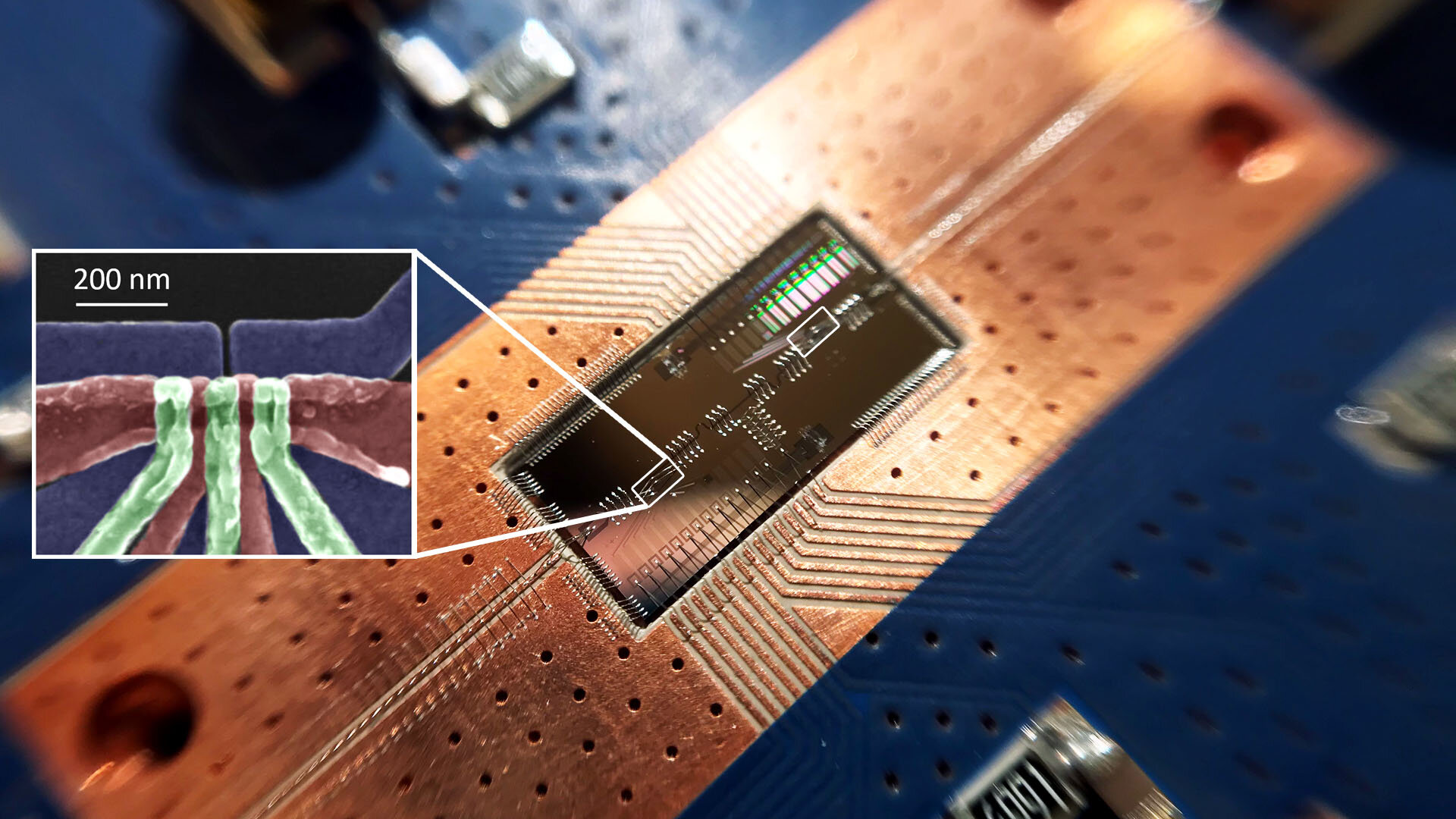
Researchers at Princeton University have demonstrated that two quantum-computing components, known as silicon spin qubits, can interact even when spaced relatively far apart on a computer chip, which unlocks new capabilities for quantum hardware.
Each qubit is composed of a single electron trapped in a tiny chamber called a double quantum dot. The team connected the qubits via a “wire” that carries light in a manner analogous to the fiber optic cables that deliver internet signals to homes. In this case, however, the wire is actually a narrow cavity containing a photon that picks up the message from one qubit and transmits it to the next qubit.
They succeeded in tuning both qubits independently of each other while still coupling them to the photon, by balancing the qubit energies on both sides of the chip with the photon energy. Previously the device’s architecture permitted coupling of only one qubit to the photon at a time.
Silicon spin qubits have several advantages over superconducting qubits because they retain their quantum state longer. Widespread use of silicon in electronics also means that silicon-based qubits could be manufactured at low cost with standard well-known processes. (Princeton University)
